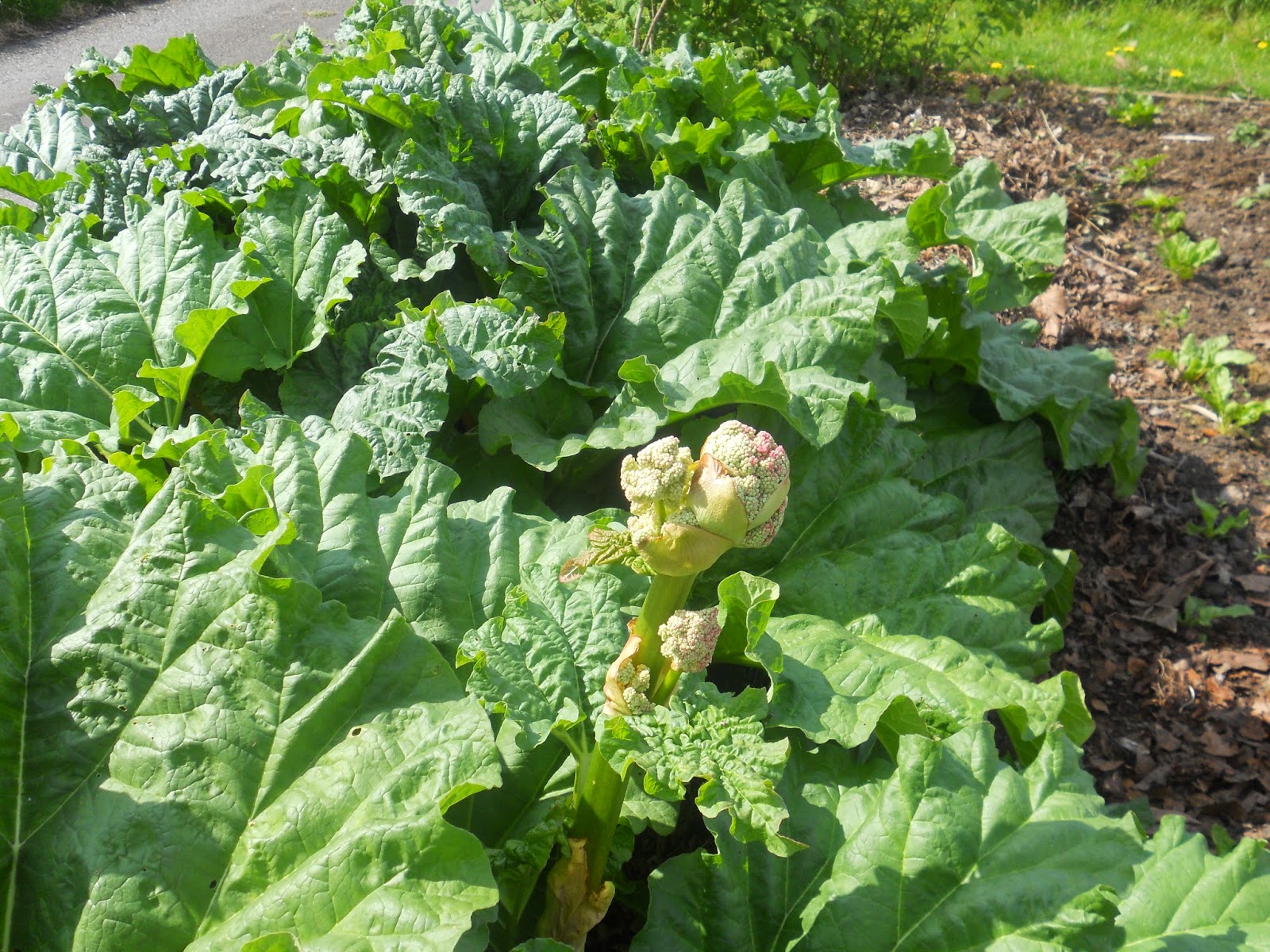Fresh this Month: Rhubarb
 |
| Our allotment rhubarb patch in April 2011, showing a rhubarb flower. |
Rhubarb is a plant which originated in the cooler climes of China and Russia, cultivation subsequently spreading through Northern Europe and into Greece, Turkey and the Levant. Now it is also grown in North America. Only the stalks are edible, the leaves being too high in oxalic acid, which is toxic and can also cause kidney stones. (In fact, rhubarb stems picked in cold weather can also be too high in oxalic acid, so it's not advisable to eat those either.) Rhubarb is technically a vegetable as the edible part is the stem, but is usually classified as a fruit since it is used like fruit.
In terms of medicinal use, rhubarb has laxative effects and it was for its therapeutic value that rhubarb was originally grown. It was not until sugar became more commonly available in the 17th century that people in Europe began cooking with rhubarb.
So if we do eat rhubarb, what benefits does it have? Rhubarb contains many vitamins and minerals, but those in nutritionally useful amounts (I reckon this as 10% or more of the recommended daily intake per 100g) are vitamin C, vitamin K, potassium and magnesium, with calcium very close at 9%. Contrary to popular belief, the stems are perfectly edible raw, though very tart. You may want to use rhubarb traditionally in jams, pies, crumbles or as a sweetened compote with custard, but bear in mind that it is probably healthier to use either gour (evaporated cane juice) or an alternative to cane sugar such as xylitol, stevia, coconut palm nectar or agave nectar. Rhubarb, lemon plus a sweetener and water makes a refreshing cold drink. If you want to maximise the vitamins in your rhubarb, then eat it raw; one way of doing this is to dehydrate it into chewy chunks, infused with fruit juice to make it sweeter- watch this space to see how it turns out when we try it.
Rhubarb pairs well with orange and ginger; they detract from its acidity and add warmth. Here are some of our rhubarb recipes, both sweet and savoury:

A spicy condiment not for the faint-hearted!

Delicious dairy free icecream

A Summer teatime treat
http://theyogivegetarian.blogspot.co.uk/2013/05/lemon-ginger-and-rhubarb-drink.html
.JPG)

.JPG)


.JPG)
A refreshingly different cooler

Try this warm as a "pudding cake"
.JPG)

Guaranteed to liven up any sandwich!

Our twist on the classic English dessert


I think rhubarb is so under rated - I've never had it in a drink and should try that - I usually use it for a crumble:)
ReplyDeleteMary
I'm always on the lookout for more ways to use rhubarb; even more so now that I've found out what nutrients it contains. The drink is really refreshing; there are lots of different versions; I thought of using rhubarb along with lemon juice and chia seeds to make rhubarb chia fresca. that said, though, you can't beat a good rhubarb crumble :)
Deletei have over the years acquired a taste for Rhubarb, my husband loves the stuff. We have some growing in the garden, but nothing on the scale as yours - I am so envious. I am inspired by your recipes, yoru rhubarb and orange chutney, but I have two that I make time and time again - Rhubarb Lentil Curry and Rhubarb Butter - both vegan and both you will love, I am sure of it.
ReplyDeleteGosh thanks- they sound awesome and I'll have a go at them both when we get our first rhubarb in- thanks :)
Delete